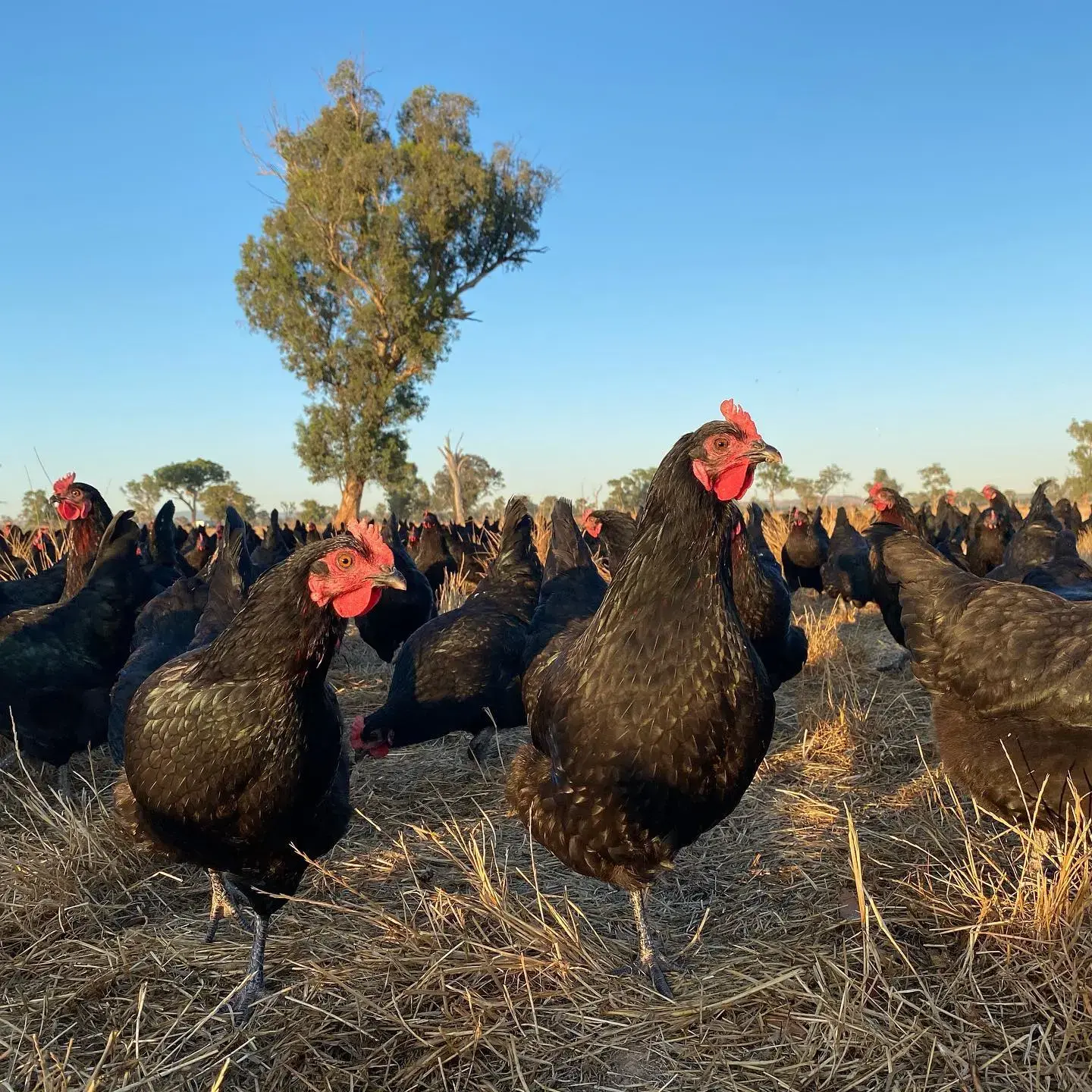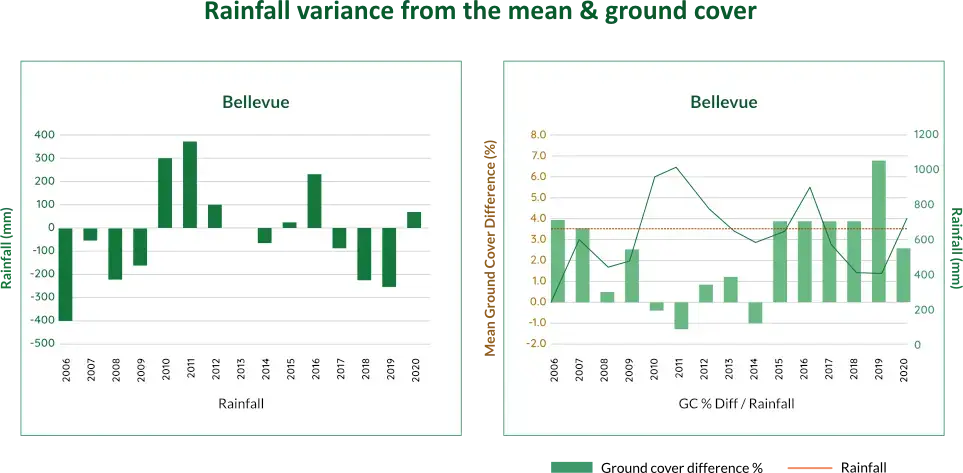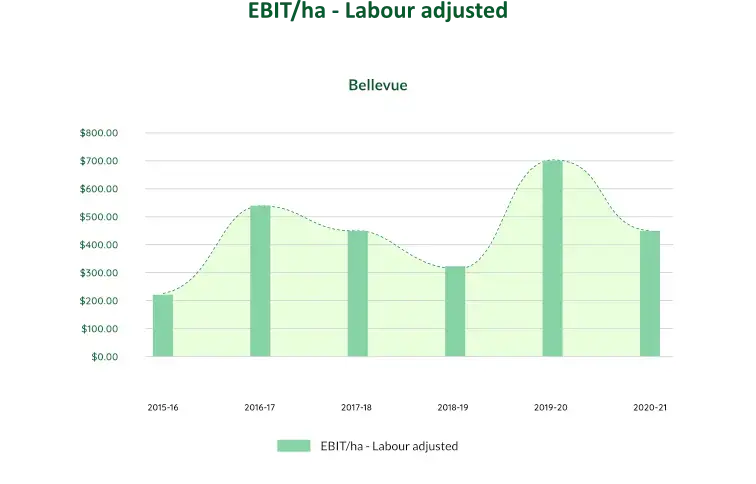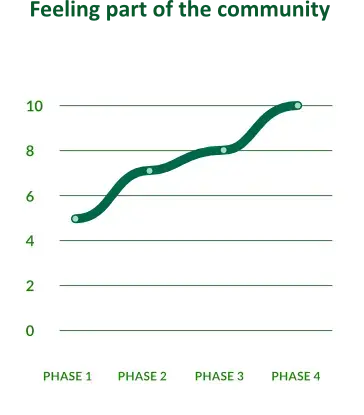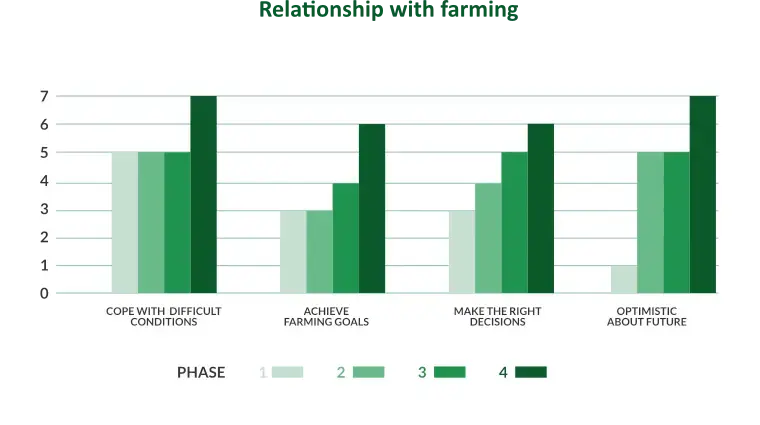Bellevue
AN 8 FAMILIES GROUP FOCUS PRODUCER CASE STUDY
After attempting high input/output cattle grazing during the Millennium drought, Sam and Prue Pincott were ‘carrying a hefty bill’ and negatively impacting their landscape and animal welfare. In an effort to turn things around, they adopted a Holistic Management approach and created a time controlled rotational grazing system that incorporated chickens as well as cattle.
They eventually decided to focus on the chicken enterprise and bought Bellevue, a property that suited this enterprise but was locally considered an unproductive ‘wet’ block. Their new approach has made Bellevue into a productive, profitable and climate-resilient enterprise, producing high quality and ethically produced food. This case study summary shares Sam and Prue’s transformation experience.
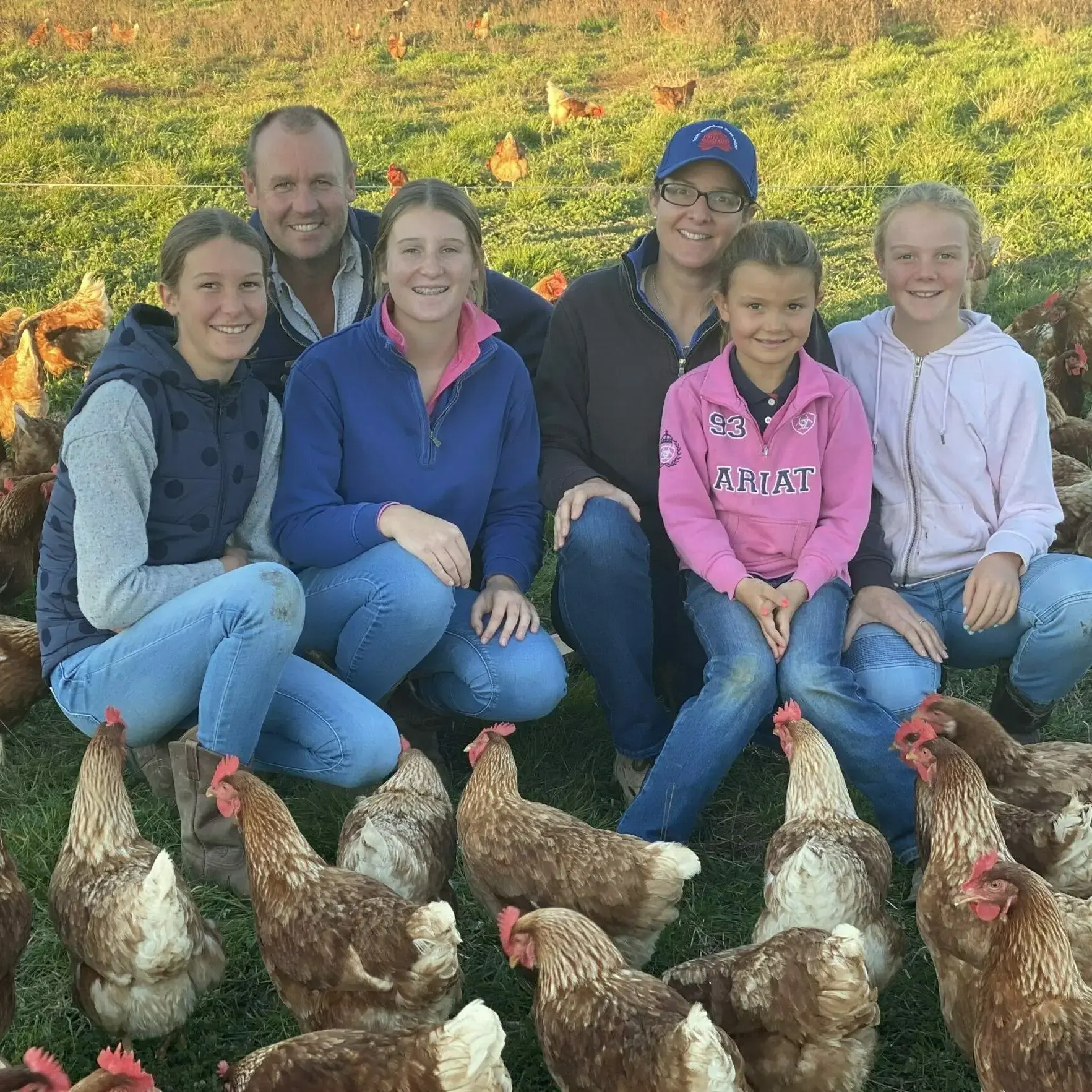
Farm Facts
Enterprise Type
Location
Property Size
Annual Rainfall
Agro-climatic region
Elevation
Soils*
Social Structure
*Learn more about soil classifications at Soil Science Australia
Highlights
Motivation for change
-
A hefty bill one year into high intensity farming during the Millennium drought
-
Discomfort with poor animal welfare and landscape degradation including ringbarking and lengthy livestock confinement feeding during drought
-
Observing older farmers who had “taken their foot off the pedal” by reducing their stocking rate during the drought and yet “their properties still looked fantastic”
Practices and innovations
-
Free range chickens incorporated into time controlled rotational grazing system
-
Worked with a marketing consultant to find niche for ethical paddock eggs
-
Co-founded the 8-families peer support group with a shared holistic decision-making approach
Outcomes
-
Income is less reliant on climate; maintained strong profit during the last drought
-
Improved animal welfare and ethical food production
-
Brought a “waterlogged”, challenging property back into productivity
-
Increased optimism about the future with plenty of time for family and community, despite labour intensive nature of egg production.
The Bellevue story
Before making practice changes
Fresh out of university, Sam and Prue began leasing Prue’s family farm at Yea, North of Melbourne, just as the Millennium Drought was kicking in. They were full of energy and excited to start implementing all of the practices that had been taught, shifting the property to higher inputs and higher outputs. Within the first year they found themselves ringbarking trees, carrying a ‘hefty feed bill’ and submitting their livestock to long periods of confinement feeding.
Sam and Prue noticed that the older famers in the area had reduced stocking and ‘taken their foot off the pedal …and their properties still looked fantastic’. This left a lot of questions and they began to attend field days looking for answers, eventually leading to a Holistic Management course. After the Black Saturday fires of 2009 burned through Yea, the family decided to sell. Sam and Prue began focus on farming on a new property, Kameroo near Holbrook, NSW, using time controlled rotational grazing.
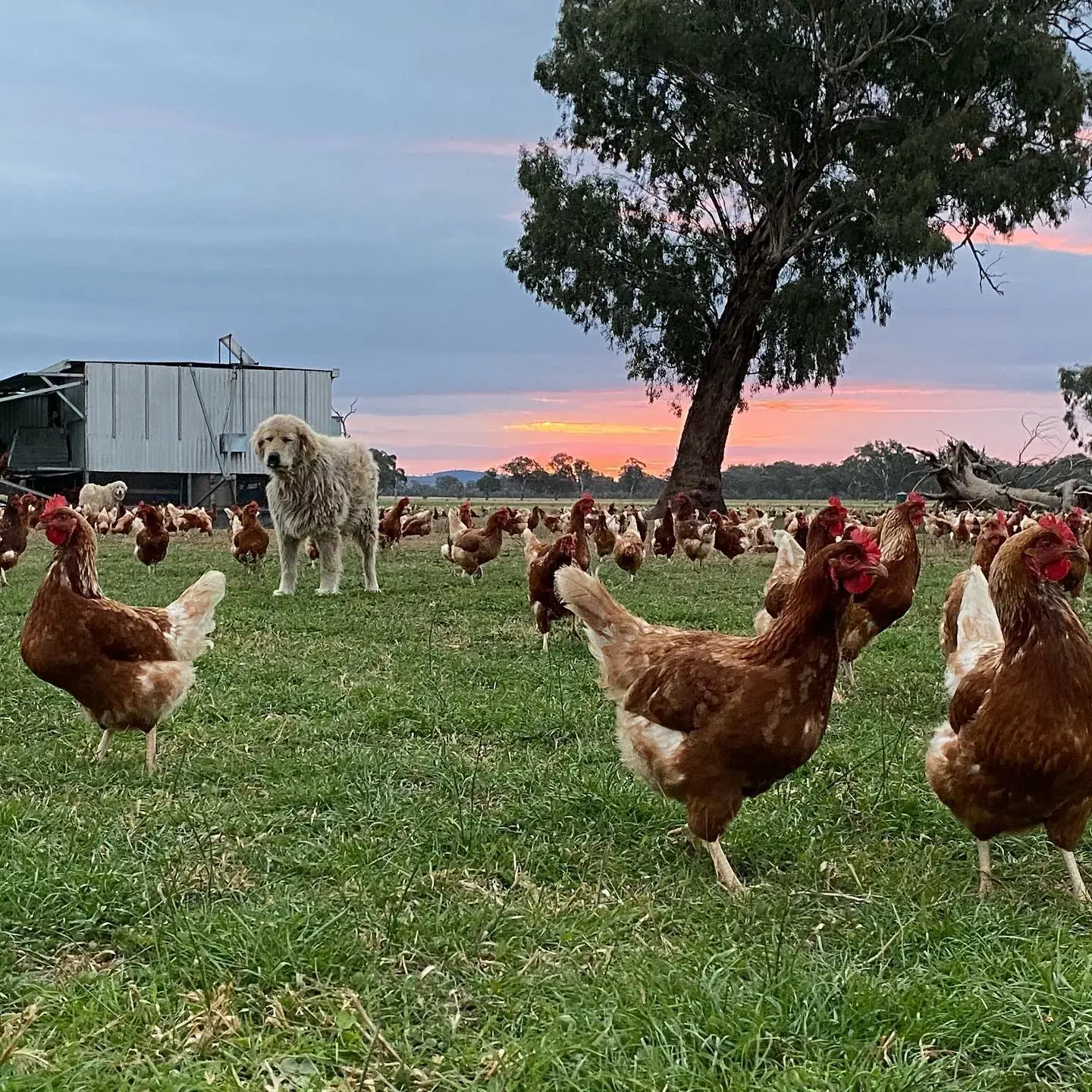
Livestock layering
Feeling ‘desperate’ with a reduced production base, debt and a new family, Sam and Prue began to think about how to meet their financial obligations. They saw a chook caravan for sale and remembered a field day demonstrating the benefit of chickens for paddock fertilisation. They bought the caravan and filled it with 50 chickens, moving the caravan each week in rotation with cattle and seeing immediate improvements to the pasture.
Spotting an opportunity
Finding support
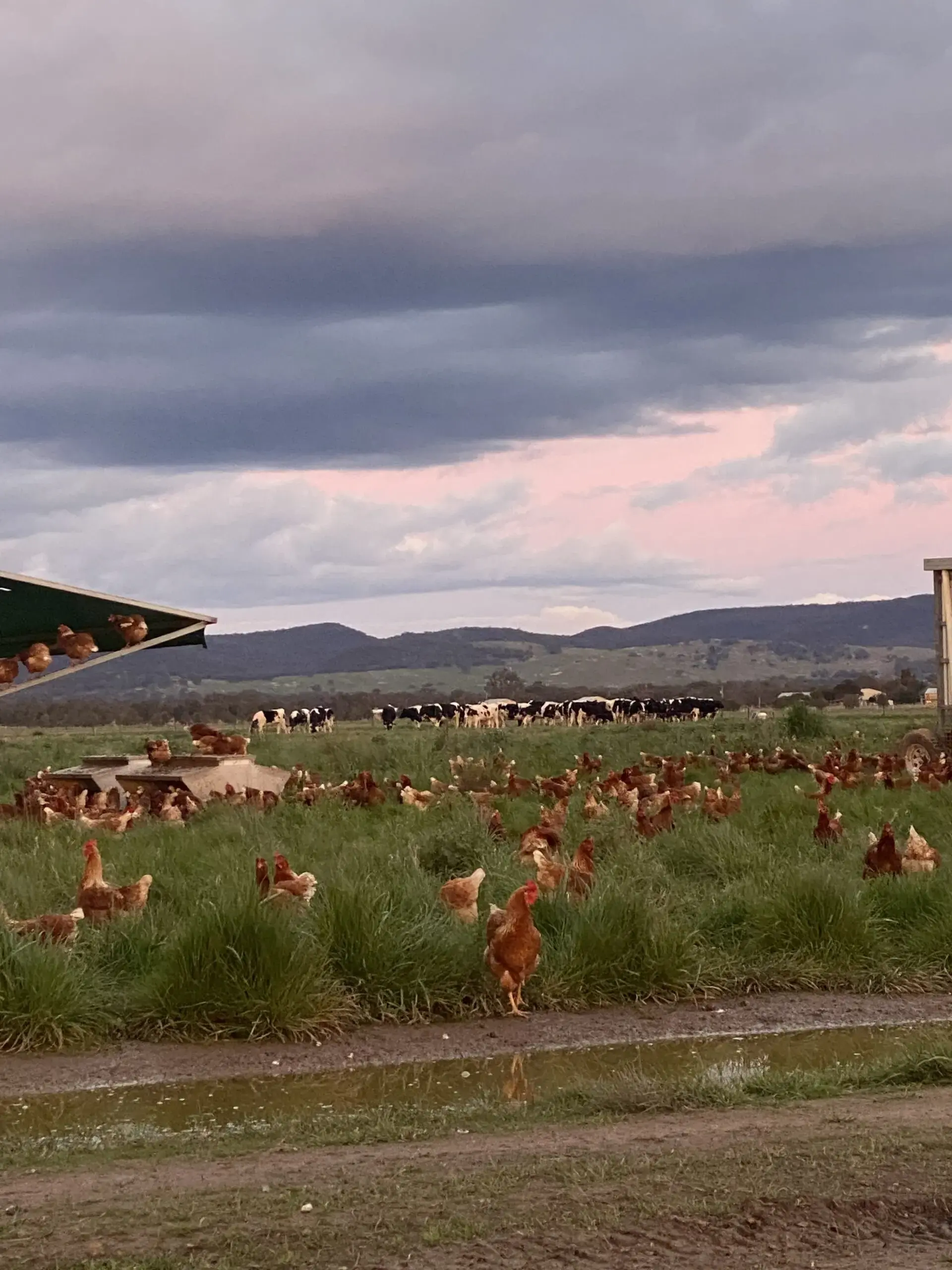
Creating a niche
Determined to break into this new market, Sam and Prue hired a business coach to advise on branding and finding a customer base. The Pincotts spent a lot of time “pounding the pavement” before identifying that their market was in a sector of the community that wanted value for their “ethical dollar”. They found that the way to reach these people was not in adjusting their price points, but rather in focusing on sharing their story and demonstrating that they go beyond basic free-range egg requirements.
Matching the land with the enterprise
Holistic chicken grazing
The chickens are kept at very low stocking densities and are provided free access to the pastures and a highly variable diet. Together with the constant movement to between locations, chickens experience fewer health issues like crop impaction, parasites and stress-pecking. These factors have led to healthier chickens, and the ethical animal husbandry that the Pincotts desired. In the paddock, the chickens scratch through the cattle dung, turn the litter into the soil, and add in their own chicken manure fertiliser. After the chickens are moved, the grazed areas get a lengthy rest period, allowing the soil ample time to process the high nutrient load left by the two forms of livestock. The pasture is able to recover and grow, avoiding a “scalding” effect or the creation of bare soil.
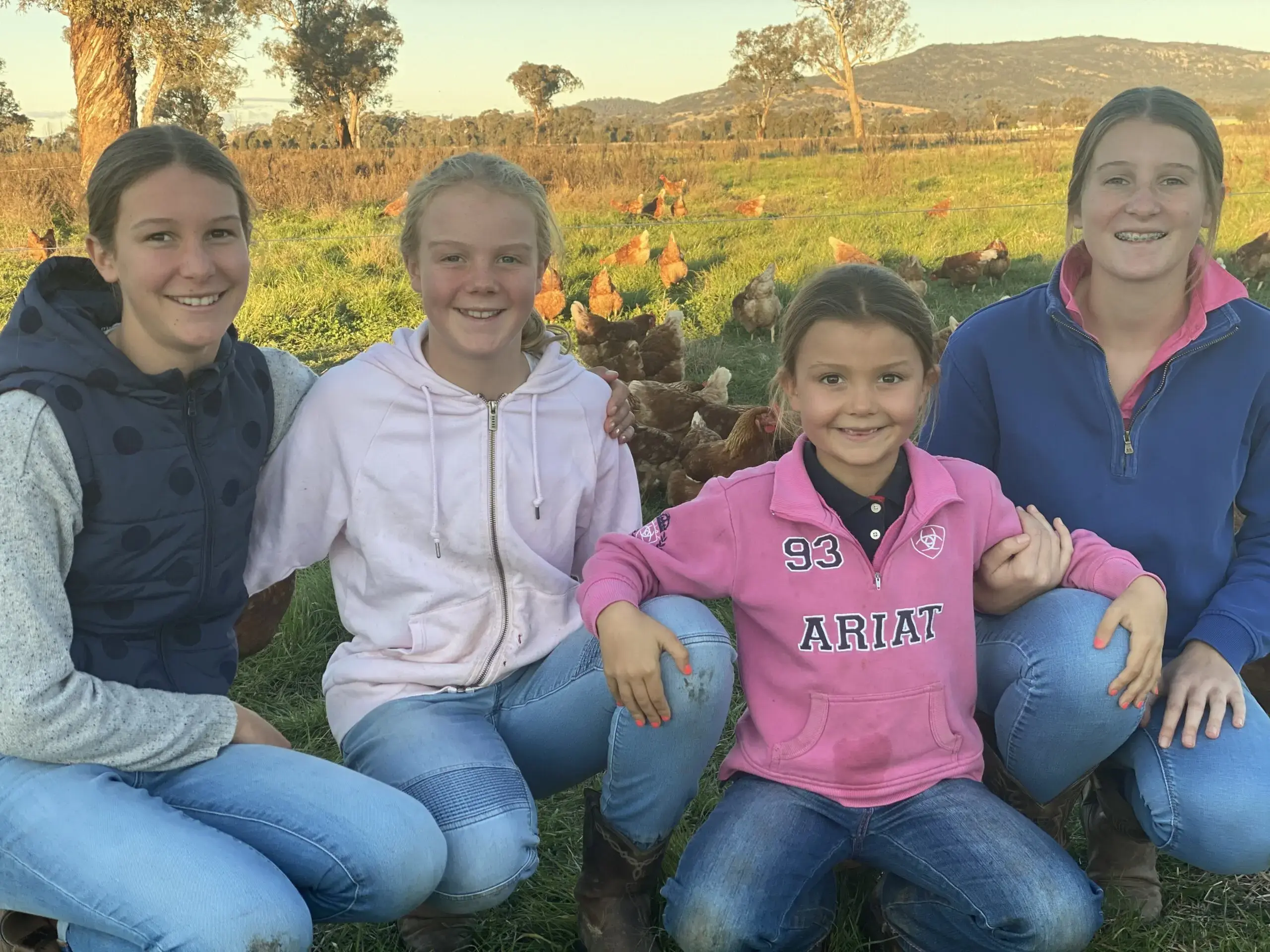
Climate resillience
By matching their production system to the landscape, rather than trying to alter a landscape to fit production, Sam and Prue have found that they have been able to create a very climate resilient enterprise. Egg production continues to be their core business; time controlled rotational grazing management practices allow them to keep chickens on the property all year round, throughout times of drought or wet winters, without causing any damage to the land or the animals’ welfare. This means that productivity and profits are reliable and consistent week to week, and year to year. The cattle currently comprise of agisted herds and the numbers are adjusted according to the seasonal conditions.
Time for the chooks, time for the family
Evolution without expansion
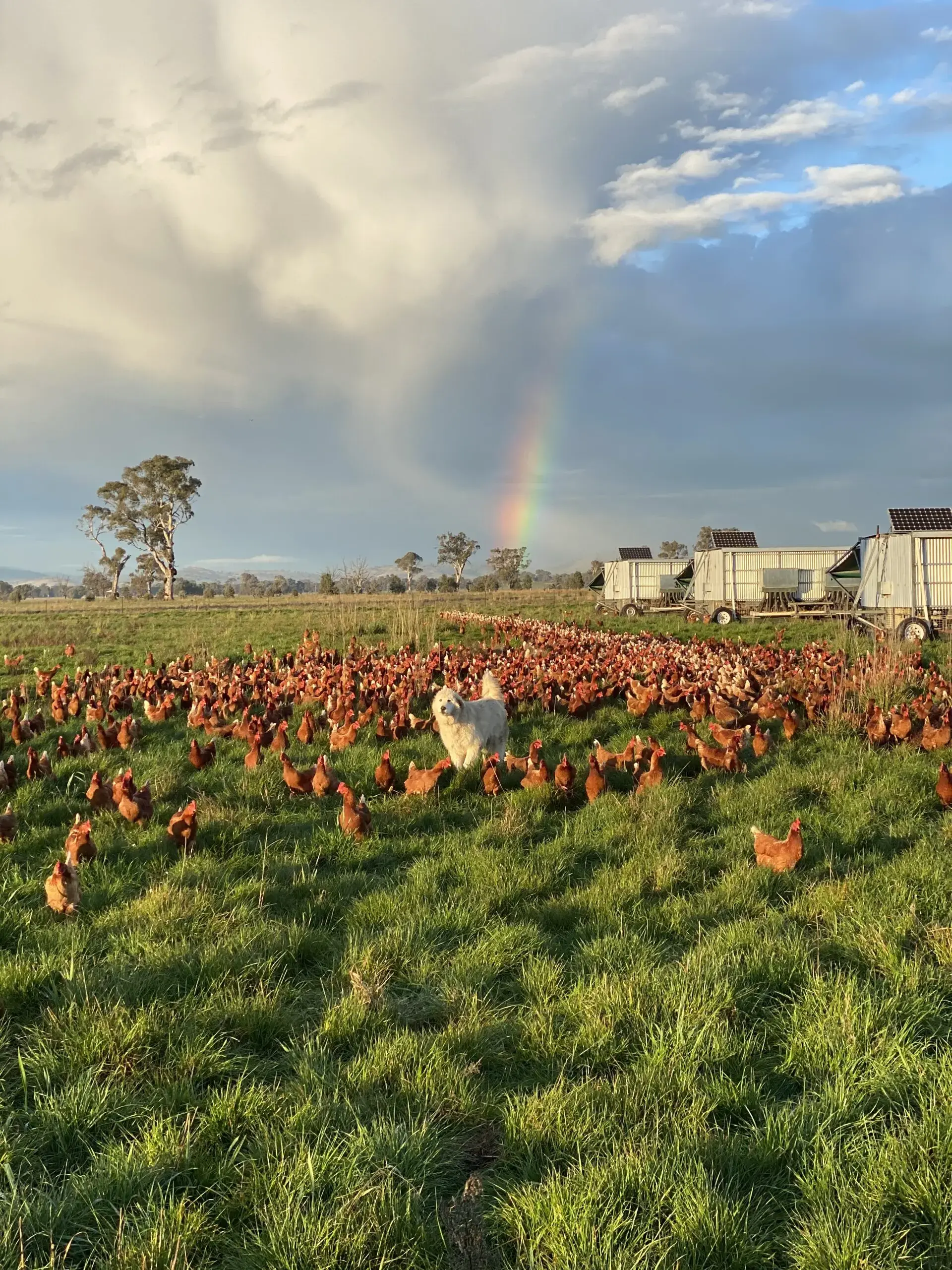
Outcomes1 The outcomes described in this section are based on best available data from remote monitoring or monitoring undertaken by the producer. Economic outcomes are based on financial data provided by the producer, while social outcomes are based on a wellbeing survey. More detail will be provided in the full reports, to be published in early 2022
Delve deeper into the results of the Pincotts’ soil and landscape regeneration practices.
ECOLOGICAL
Ecological
The primary indicator used to evaluate ecological function at Bellevue is groundcover. Following the purchase in 2013, within two years ground cover went from little to negative difference compared with the surrounding area, to a difference between 3.8- 6.8%.
This was despite 3 years of below average annual rainfall (Fig. 1). While the property has similar groundcover levels to the surrounding area during wet years, in dry conditions the ground cover is maintained longer than the surrounding area.
Figure 1: Rainfall variance from the mean for the four focus farms and BOM weather stations in parentheses. Median ground cover average difference including annual and long-term average rainfall. Mean ground and fractional cover data derived from VegMachine. Rainfall data taken from corresponding BOM weather stations.
SOIL
Soil
Bellevue has a long history of practices that have degraded the soil resource. The soils are sodsols, with strong texture contrast between A horizons and sodic B horizons which are not strongly acid. Generally, Sodosols have a low-nutrient status and are vulnerable to erosion and dryland salinity when vegetation is removed.
When the Pincotts purchased Bellevue they knew that the soil was degraded and the addition of chickens helped ‘instantly’ to improve soil health. ‘we could grow more grass by having that animal in the system.”
ECONOMIC
Economic
An external analysis of Bellevue’s accounts has found that the farm is very profitable, and able to maintain strong profits, even during the depths of the recent 2019-20 drought. This suggests a climate resilient income. The Pincotts’ primary business goal is to feel in control of their own business and ‘be their own boss’. Their investment in business coaching has helped achieve this
through the implementation of direct marketing arrangements and strong customer relationships which have given them control over their income. Analysis of the labour adjusted earnings before interest and taxes (EBIT) shows that the business has achieved a substantial EBIT over the six years assessed, meeting the Pincotts’ own internal profit target every year.
SOCIAL
Social
Sam completed a short survey designed to estimate the household’s wellbeing and relationship with farming over the period of transformation. In terms of wellbeing, the Pincotts’ satisfaction with feeling part of a community doubled over the transformation period (Fig. 4).
Their satisfaction with life as a whole had an initial increase when they first started making practice changes (Phase 2), then plateaued during the second stage of changes (Phase 3) before increasing to its current levels of 9 out of a potential 10 points (Fig. 3).
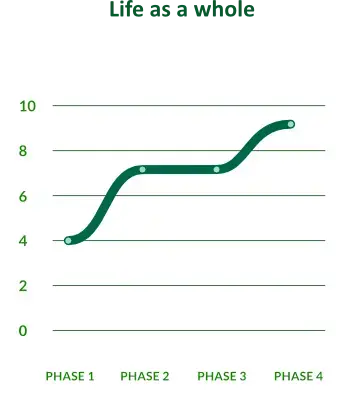
Figure 3: Sam retrospectively estimated their satisfaction with “Life as a whole” at each phase of the transformation period, phase 1 being “before changes were made” and phase 4 being “now”, on a scale from 1-10, with 10 being extremely satisfied. The wellbeing questions were inspired by those used by the Australian Centre on Quality of Life (2020).
Figure 4: Sam retrospectively estimated their satisfaction with “Feeling part of a community” at each phase of the transformation period, phase 1 being “before changes were made” and phase 4 being “now”, on a scale from 1-10, with 10 being extremely satisfied. The wellbeing questions were inspired by those used by the Australian Centre on Quality of Life (2020).
Sam and Prue’s relationship with farming has improved in all aspects compared to before they made practice changes. Their optimism about their farming future was very low before making changes (Phase 1) however, Sam and Prue reported that it increased dramatically as soon as they began to make practice changes before reaching maximum available levels during the current period (Phase 4). Sam and Prue’s perception of their ability
to achieve the things they want on their farm and make the right decisions about farm management was moderately low before making practice changes (Phase 1) and increased steadily over the transformation period. Their perceived ability to cope well with difficult conditions on the farm had a much higher baseline before making practice changes (Phase 1) and did not show improvement until it reached maximum available levels during the current period (Phase 4)
Figure 5: Sam and Prue retrospectively estimated their agreement with each of the above statements at each phase of the transformation period, Phase 1 being “before changes were made”, and Phase 4 being “now”, on a scale of 1-7, with 7 being strongly agree. These questions were inspired by the Regional Wellbeing Survey (Shirmer, 2021)
This project is supported by the Department of Water, Agriculture and the Environment, through funding from the Australian Government’s National Landcare Program.




